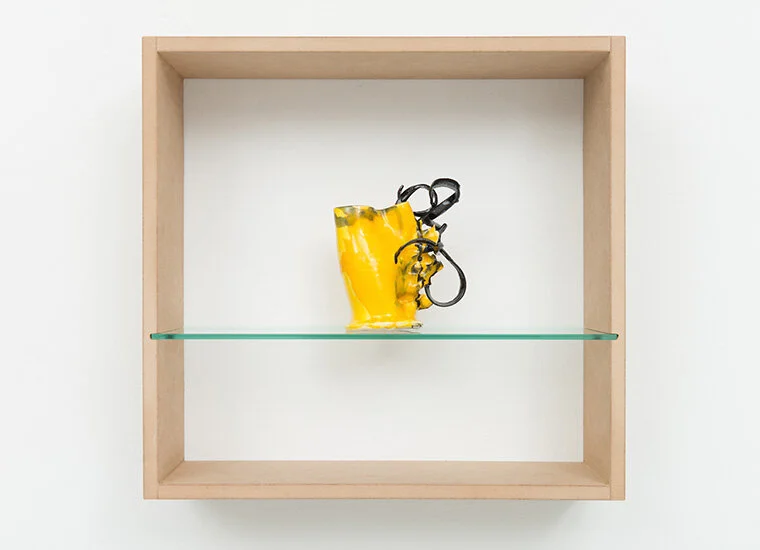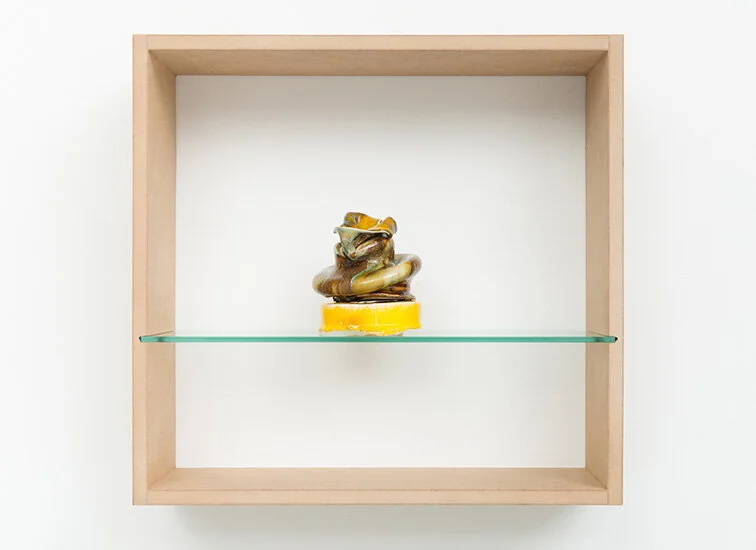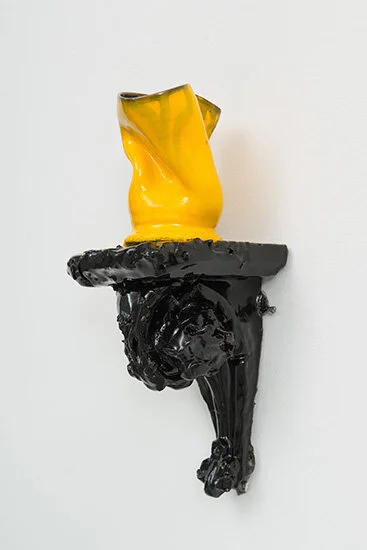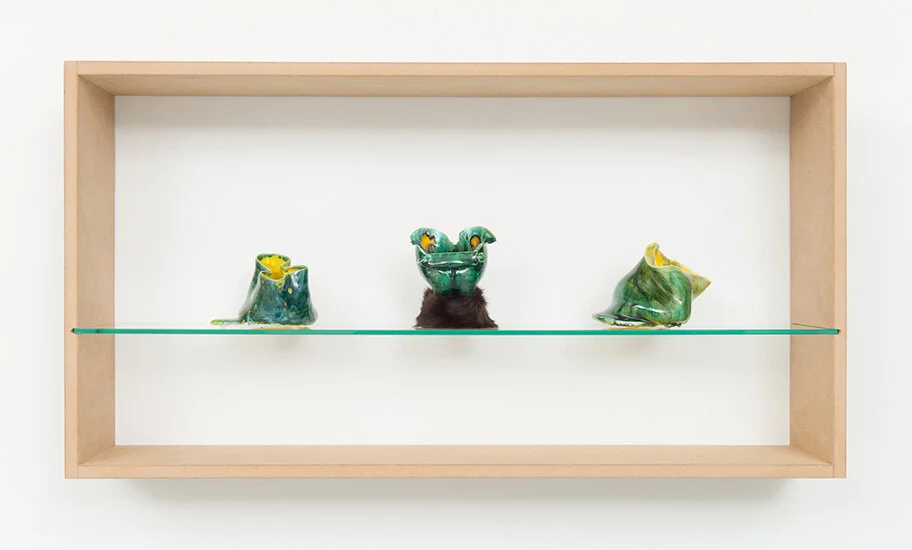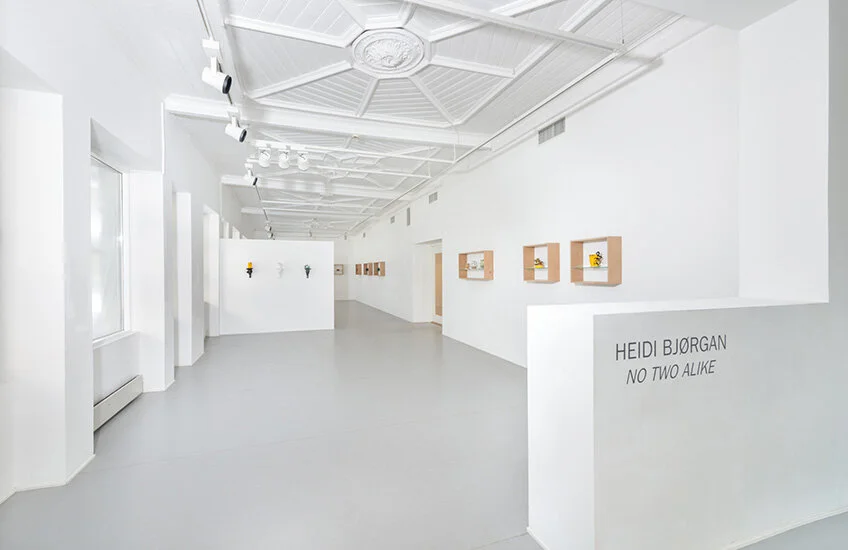In the No Two Alike III exhibition, Bjørgan shows over 100 ceramic consolles with objects made of stoneware Clay and porcelain, all with their own identity and form.
Bjørgan interacts in a vital dialogue with the american ceramist, George Ohr ( 1857-1918) An artist famous for his expressive art and working methods. The Ohr objects will appear as they have melted in the oven, his pots twisted and bended, and the glazes all bright and metallic. Like Ohr, Bjørgan challenges the notion of traditional Ceramics by eliminating all traces of trained skills of the material.Throughout her career, Bjørgan has contributed to reinforce and renew the Norwegian discourse relating to the crafts, both through her work as ceramist and as a curator.
In 2016, Bjørgan staged a dramatic dialogue between her own work and the Ceramics collection at Nordenfjeldske Kunstindustrimuseum, focusing on creating a story or meeting between the objects from the collection that inspired her as an artist. By transforming the museum collection into a baroque and adventurous meetingpoint, at the same time examining conventions around ways of exhibiting. The solo show, No Two Alike III, is a continuation of a group project PRESENT, started in august 2017, at Bomuldsfabrikken.
'I’m making pots for art’s sake, God’s sake, for future generations, and for my own satisfaction,' claimed the eccentric American ceramicist George Ohr (1857-1918). He said this over a century ago, but up to the late 1970's almost none of the future generations of which he spoke knew of his works, which were stored in a garage in his hometown of Biloxi, Mississippi. Since then the situation has changed considerably, and his prediction has come true: ‘When I’m gone my work will be prized, honoured, and cherished.’ Heidi Bjørgan’s exhibition can be seen as a confirmation of this. In the summer of 2013 she took a study trip to Biloxi, and her encounter with Ohr’s art made an obvious impression. The exhibition’s title is a quote from Ohr, but Bjørgan’s works are also inspired by his expressive visual language. Particularly from 1895 to 1910, this ‘mad potter from Biloxi’, as he called himself, made ceramic works that were without parallel at the time. His goal was not to create two identical works, so for him, concepts such as ‘perfect’ or ‘uniform’ had no significance. Many of his vases seem to have melted in the kiln; his pots have edges that buckle and curl, and the colours – well, that would need a whole chapter. Especially shocking was his use of metallic and lustrous glazes.
In her new works, Bjørgan enters into dialogue with Ohr’s art, in particular, with his work method. It’s not about copying, at least not in the sense of making something derivative or second-rate. A more relevant concept of copying would be ‘to emulate’ or ‘elaborate on’. The Latin expression copia can be translated variously as plenty, abundance, vocabulary, inventory or archive, all with positive connotations. In Antiquity, when a speaker sought to convince others with rhetoric, he was advised to develop copia, to reproduce the best patterns and formats available in any given situation.
Ohr has become Bjørgan’s role model, and the dialogue has taken her art in a more expressive direction. Luscious colours and buxom shapes open the possibility of a sensuality never before seen in her art. Many of the objects have clear references to women’s bodies. Even though this represents something new and different in her artistic practice, we can still see continuity: Bjørgan has previously used found shapes and readymades, and these new works are also based on ‘borrowings’. But instead of using mass-produced objects, she has hired a potter to throw perfect, functional shapes which she has then deformed and turned into sculptural objects. In this way she erases all traces of learned skill and invents new technics that offer the possibility for other effects. In short: the work method is to do everything that in theory shouldn’t be done, such as blend glazes, clay types and other substances that cannot be mixed; to expose the works to treatments where the risk of making ‘mistakes’ is very high. Other examples would be to mix temperatures and fire objects between three and five times. A crack is allowed to be a crack with its own expression – it is not a mistake. She adds and subtracts until the result, in her eyes, becomes interesting.
Photo documentation: Thomas Tveter
